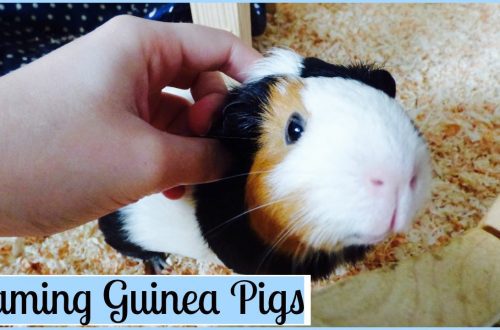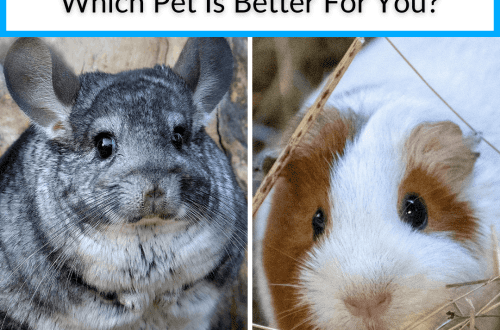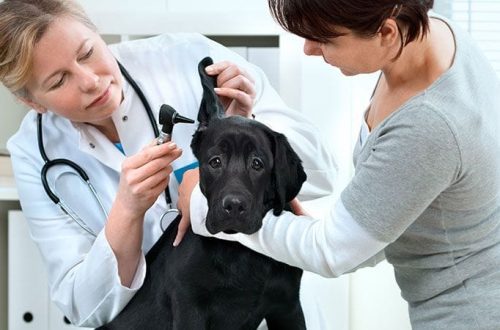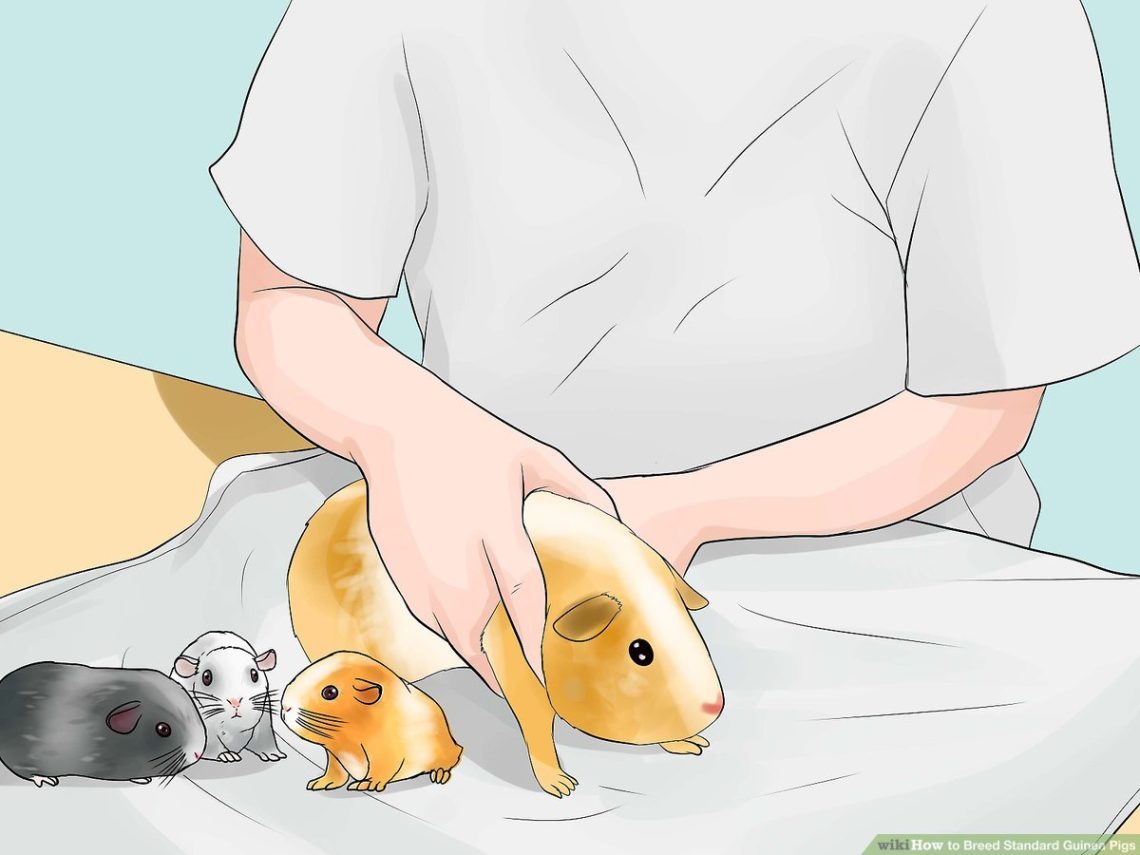
How to breed self breed guinea pigs
To be a good breeder of guinea pigs, you first need to learn how to be a good judge, learn to understand what marks certain pigs deserve, but most importantly, you need to know exactly what their shortcomings are, and this is exactly where it is necessary to start breeding activity, acquiring new pigs.
When you are judging a guinea pig, it is important that the animal is positioned correctly. Her posture, the way she sits, is very important, it must be remembered that her hind legs are located strictly under the body, and the front legs support the shoulders as much as possible in order to emphasize their size, while the head flows smoothly from the body, and is not directed where something far into the sky. Looking from the side, front and top will allow you to capture all the necessary features and lines, as well as color.
The profile of a Selfie resembles a Roman nose, which is most pronounced in black, white, cream and gold, almost like a parrot’s beak, but should never be like a golf ball, without a hint of flatness in the forehead area. The head should merge into deep shoulders, which form a small hump or mound behind the head, and then they merge into the line of the back, which in turn flows smoothly into the back.
Seen from the front, the gilt should show a good distance between the eyes and a broad muzzle with a pigmented nose. The eyes should be prominent, but not too much in relation to the general proportions of the head, and pleasing, and there should be no evidence of tearing. The ears should be large and very well dropped, each looking like a rose petal, and the distance between them should be as wide as possible. They should be located on the same level and not be higher or lower than another. Curled tips and uncolored edging are very often passed on to offspring and should be punished.
Looking down at the pig, its appearance should be as close as possible to the shape of a brick, with smoothed corners; in particular, the shoulders should be broad and the body should not be thick and pear-shaped. Even without picking up the gilt, many key points in color can already be seen by the judge. The color at the ends of the hair should be bright and glossy, and the hair should be shiny. In all color variations between black and white, shade is very important (for full details on shades see the breed standard). However, once again it must be emphasized that a solid solid color of the whole body is very important here. There should be no spots or feathers that differ in color from the main coat, including the color of the undercoat. The fading of color on the forelegs and around the eyes may only be present in the standards of other breeds. The ears must be of the color specified in the standard. Excessive plucking of the hair (overgrooming) can damage and change the shade of the color, thus depriving the luster that is stipulated by the standard. A slight increase or decrease in color is allowed, in contrast to defects in the coat itself. Another factor to keep in mind is smoothness. Tousled areas of hair around the eyes or a slight wavy coat are very often passed on to offspring, so in this case these defects are punished.
Having received the first superficial impression of the mumps, now you can proceed to a more detailed examination of it. When you pick up a pig, you can get an idea of its condition and coat quality. The gilt should have a firm, firm body in the shoulder area, not a weak one. The torso should be firmly built, not soft and loose, but in this case not too thin. The coat should be soft and velvety to the touch, without a hint of coarseness or greasiness. Obviously, the condition of the gilt and its preparation are of equal importance when showing the gilt at the show.
The last part of the gilt’s examination is the examination of the belly and undercoat, which will give you a final idea of the coat, its color in different parts of the hair and its length. On the abdomen and areas around the anus and on the cheeks, unusually or strangely colored hair is most often found. I would not advise severely penalizing the presence of a few unusual hairs as this does not affect the overall impression of the mumps, which is the most important, however, the accumulation of such hairs or small groups all over the body should be taken into account and treated more seriously. Most often, problems with the undercoat appear in the flanks and shoulders, and of course the poor color of the undercoat gives an untidy appearance to the entire coat (feathers). All color variations in the Self breed should have an undercoat color as close as possible to the main color, but most often this can be fully achieved only in white pigs. Often, when an inexperienced examiner examines a pig, the length of the hair does not come into his attention, except for the area of the sacrum, shoulders and sides.
It’s amazing how many people who show their gilts focus on just one part of the body while grooming and forget about the rest. The coat should be short and free of loose hairs. However, the coat should not be too thin and sparse, as this may disturb the basic color. Red, brown, beige, and lilac gilts tend to have longer hair than other Self color varieties due to the difficulty of grooming, as over-plucking can lead to discoloration and feathering.
During judging, it is necessary to take into account and make allowances for different-sex pigs. Males tend to have a less pronounced transition from the head to the neck, but at the same time the Roman nose remains, without a hint of smoothing of the lines. The muzzle is usually less full than the female, but the male should have a good wide space between the eyes and ears. The texture of the coat is usually less silky than that of females, but despite the difficulty in preparing males due to the presence of sebaceous glands, no allowances should be made for those males that have a dirty or greasy coat.
Basic principles of selfie breeders:
- Learn to evaluate your stock and use only the best you have.
- In breeding work, use only those animals that come from high-bred parents, and only in this case they will produce the same high-bred offspring.
- Be very careful when using your best male, as his influence will be reflected in all the resulting livestock. When you’re matching, try to only reinforce the apparently positive traits, but never reinforce the negative ones, whether it’s undesirable coat color, head shape, size, ear set, or anything else.
And one more thing: wait, hope, feed well, cook carefully and pray!
To be a good breeder of guinea pigs, you first need to learn how to be a good judge, learn to understand what marks certain pigs deserve, but most importantly, you need to know exactly what their shortcomings are, and this is exactly where it is necessary to start breeding activity, acquiring new pigs.
When you are judging a guinea pig, it is important that the animal is positioned correctly. Her posture, the way she sits, is very important, it must be remembered that her hind legs are located strictly under the body, and the front legs support the shoulders as much as possible in order to emphasize their size, while the head flows smoothly from the body, and is not directed where something far into the sky. Looking from the side, front and top will allow you to capture all the necessary features and lines, as well as color.
The profile of a Selfie resembles a Roman nose, which is most pronounced in black, white, cream and gold, almost like a parrot’s beak, but should never be like a golf ball, without a hint of flatness in the forehead area. The head should merge into deep shoulders, which form a small hump or mound behind the head, and then they merge into the line of the back, which in turn flows smoothly into the back.
Seen from the front, the gilt should show a good distance between the eyes and a broad muzzle with a pigmented nose. The eyes should be prominent, but not too much in relation to the general proportions of the head, and pleasing, and there should be no evidence of tearing. The ears should be large and very well dropped, each looking like a rose petal, and the distance between them should be as wide as possible. They should be located on the same level and not be higher or lower than another. Curled tips and uncolored edging are very often passed on to offspring and should be punished.
Looking down at the pig, its appearance should be as close as possible to the shape of a brick, with smoothed corners; in particular, the shoulders should be broad and the body should not be thick and pear-shaped. Even without picking up the gilt, many key points in color can already be seen by the judge. The color at the ends of the hair should be bright and glossy, and the hair should be shiny. In all color variations between black and white, shade is very important (for full details on shades see the breed standard). However, once again it must be emphasized that a solid solid color of the whole body is very important here. There should be no spots or feathers that differ in color from the main coat, including the color of the undercoat. The fading of color on the forelegs and around the eyes may only be present in the standards of other breeds. The ears must be of the color specified in the standard. Excessive plucking of the hair (overgrooming) can damage and change the shade of the color, thus depriving the luster that is stipulated by the standard. A slight increase or decrease in color is allowed, in contrast to defects in the coat itself. Another factor to keep in mind is smoothness. Tousled areas of hair around the eyes or a slight wavy coat are very often passed on to offspring, so in this case these defects are punished.
Having received the first superficial impression of the mumps, now you can proceed to a more detailed examination of it. When you pick up a pig, you can get an idea of its condition and coat quality. The gilt should have a firm, firm body in the shoulder area, not a weak one. The torso should be firmly built, not soft and loose, but in this case not too thin. The coat should be soft and velvety to the touch, without a hint of coarseness or greasiness. Obviously, the condition of the gilt and its preparation are of equal importance when showing the gilt at the show.
The last part of the gilt’s examination is the examination of the belly and undercoat, which will give you a final idea of the coat, its color in different parts of the hair and its length. On the abdomen and areas around the anus and on the cheeks, unusually or strangely colored hair is most often found. I would not advise severely penalizing the presence of a few unusual hairs as this does not affect the overall impression of the mumps, which is the most important, however, the accumulation of such hairs or small groups all over the body should be taken into account and treated more seriously. Most often, problems with the undercoat appear in the flanks and shoulders, and of course the poor color of the undercoat gives an untidy appearance to the entire coat (feathers). All color variations in the Self breed should have an undercoat color as close as possible to the main color, but most often this can be fully achieved only in white pigs. Often, when an inexperienced examiner examines a pig, the length of the hair does not come into his attention, except for the area of the sacrum, shoulders and sides.
It’s amazing how many people who show their gilts focus on just one part of the body while grooming and forget about the rest. The coat should be short and free of loose hairs. However, the coat should not be too thin and sparse, as this may disturb the basic color. Red, brown, beige, and lilac gilts tend to have longer hair than other Self color varieties due to the difficulty of grooming, as over-plucking can lead to discoloration and feathering.
During judging, it is necessary to take into account and make allowances for different-sex pigs. Males tend to have a less pronounced transition from the head to the neck, but at the same time the Roman nose remains, without a hint of smoothing of the lines. The muzzle is usually less full than the female, but the male should have a good wide space between the eyes and ears. The texture of the coat is usually less silky than that of females, but despite the difficulty in preparing males due to the presence of sebaceous glands, no allowances should be made for those males that have a dirty or greasy coat.
Basic principles of selfie breeders:
- Learn to evaluate your stock and use only the best you have.
- In breeding work, use only those animals that come from high-bred parents, and only in this case they will produce the same high-bred offspring.
- Be very careful when using your best male, as his influence will be reflected in all the resulting livestock. When you’re matching, try to only reinforce the apparently positive traits, but never reinforce the negative ones, whether it’s undesirable coat color, head shape, size, ear set, or anything else.
And one more thing: wait, hope, feed well, cook carefully and pray!
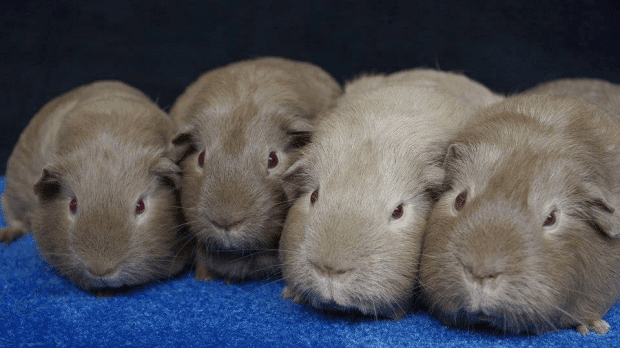
Selfie standard
Color
Should be glossy and as rich as possible all over the body and head. The undercoat should be as intensely colored as possible down to the roots of the hair and should not give the impression of faintly colored feathers or flakes. The color of the paws must match the color of the body.
The maximum number of points is 30
breed type
Broad Roman nose, good width of the muzzle at the nostrils, short stocky body with very wide set deep shoulders.
The maximum number of points is 25
Wool
Short and silky, shiny.
The maximum number of points is 15
Ears
Shaped like a rose petal, set wide apart, large and hanging down.
The maximum number of points is 10
Eyes
Large and bulging.
The maximum number of points is 10
Presentation
Condition, cleanliness, readiness.
The maximum number of points is 10
Total: 100 points
You can read about all colors of selfies in the article “Breed Standards” (link to the article).
Color
Should be glossy and as rich as possible all over the body and head. The undercoat should be as intensely colored as possible down to the roots of the hair and should not give the impression of faintly colored feathers or flakes. The color of the paws must match the color of the body.
The maximum number of points is 30
breed type
Broad Roman nose, good width of the muzzle at the nostrils, short stocky body with very wide set deep shoulders.
The maximum number of points is 25
Wool
Short and silky, shiny.
The maximum number of points is 15
Ears
Shaped like a rose petal, set wide apart, large and hanging down.
The maximum number of points is 10
Eyes
Large and bulging.
The maximum number of points is 10
Presentation
Condition, cleanliness, readiness.
The maximum number of points is 10
Total: 100 points
You can read about all colors of selfies in the article “Breed Standards” (link to the article).



